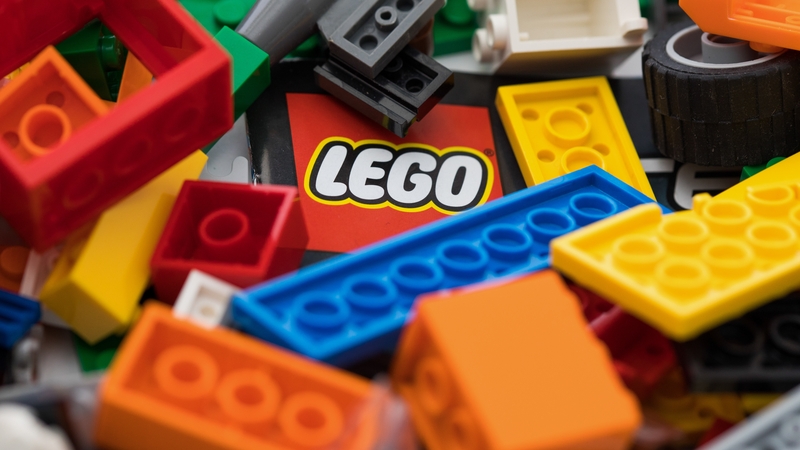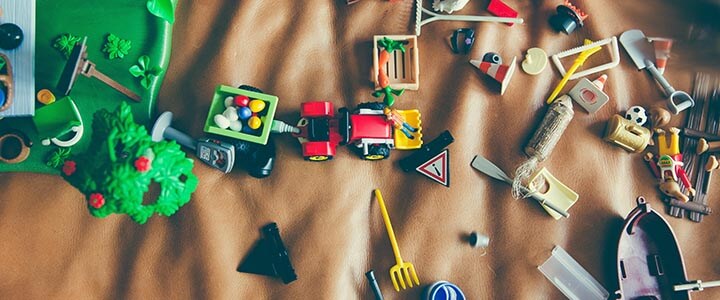Mattel makes a Barbie from recovered ocean-bound plastic
Jun 12, 2021, 11:43pm EDT
Mattel, Inc. has launched its first Barbie line made from recycled ocean-bound plastic.
Called Barbie Loves the Ocean, the collection is part of the manufacturer’s goal to achieve 100% recycled, recyclable or bio-based plastic materials across all its products and packaging by 2030.
Ocean-bound plastic is defined as plastic sourced within 50 kilometers of waterways in areas lacking formal waste collection systems.
The line has three dolls whose bodies are made from 90% recycled ocean-bound plastic parts as well as an accompanying Beach Shack playset and accessories made 90% from the recovered plastic.
Mattel also has introduced a new brand campaign to teach kids about sustainability. "The Future of Pink is Green" pairs the brand’s iconic color with green representing protecting the planet.
In addition, some proceeds from a limited-edition 4ocean x Barbie bracelet made with post-consumer recycled materials and hand-assembled by artisans in Bali will support 4ocean’s efforts to remove trash from oceans, rivers and coastlines and distribute educational materials.
“Our 62-year legacy is steeped in evolution, as we consistently drive forward initiatives designed to better reflect the world kids see around them. Barbie Loves the Ocean is a prime example of sustainable innovations we’ll make as part of creating a future environment where kids can thrive,” said Lisa McKnight, senior vice president and global head of Barbie & dolls, Mattel.
Mattel has stated its goal to use 100% recycled, recyclable or bio-based plastic materials in all products and packaging by 2030. Other efforts include Mattel PlayBack, a toy takeback program designed to recover and reuse materials from old toys
Lego finds the right fit with recycled plastic bottles
Updated / Wednesday, 23 Jun 2021 15:49
Lego said it expects to begin selling toy building bricks made from recycled plastic bottles in 18 to 24 months
Lego expects to begin selling toy building bricks made from recycled plastic bottles in 18 to 24 months, having found a suitable green alternative to oil-based plastic, the Danish toymaker said today.
Lego's search for an alternative material has been a challenge, with almost 150 engineers and scientists testing many different plant-based and recycled materials over the past six years.
"We are super excited about this breakthrough," said Tim Brooks, Lego's vice president of environmental responsibility.
"We want our products to have a positive impact on the planet, not just with the play they inspire, but also with the materials we use," he added.
Lego, which uses some 100,000 tonnes of plastic in its products each year, said it will use recycled material from plastic bottles that are certified as safe to handle beverages in Europe and the US.
A one-litre plastic water bottle will yield about ten standard Lego bricks.
Since 2018, the company has made some of the less rigid parts of Lego sets, such as plants and trees, from bio-polyethylene made from sugarcane.
But using such materials for harder bricks has proven challenging, while maintaining the shape, feel and safety for children.
Lego said last year it would invest $400m over three years to step up efforts to use sustainable materials and that it aimed to replace plastic bricks with ones made from sustainable materials by the end of the decade.
Lego has applied for a patent on its mix of recycled plastic bottles and a strengthening additive. So far, the bricks have a slight grey tint, but the company is refining the material colour and how the bricks grip together.
The company expects to bring the prototype 2x2 and 2x4 bricks to market in 18 to 24 months and will continue to test the material on various brick types.
Rival toy maker Mattel, best known as the maker of Barbie dolls, in 2019 announced it aimed to produce its plastic toys from recycled, recyclable or bio-mass plastics from 2030.toys
Plastic toys: The effect on humans and the environment | Green Journal
Over the years, there have been many cases of news breaking about plastic toys and their containment of toxins. In addition to the harmful ingredients that can be found in the plastic, we also have to take into account the effect of the environment that plastic usage has.
The internet is flooding with ways to reduce your plastic usage and people are more aware of the need to cut down on this. Still, it’s difficult to change behaviours and somehow parents easily end up with a great amount of plastic toys at home. This happens partly because you receive gifts from friends and family, and partly because kids prefer bright coloured plastic toys more than bland, wooden ones.
But what is really the danger with plastic toys? Are they all really that bad for my kids and the environment? We’ll straighten it out down below so you don’t have to think about it!
Are there really toxins in plastic toys?
The answer is, of course, that it depends. Not all toys contain toxins, but they can be found in some cases. Toys that have toxins in them are hazardous to children mainly because of their tendency to swallow and chew on the toys, which can result in the toxins being absorbed by the body When it comes to young children, even the smallest amounts of toxins can affect their health.
The toxins can either be found in the plastic itself or they can be included in the pigments used to colour toys and make them more attractive to children.
Although there are EU regulations for which toxins may or may not be included in toys, there are products that can slip through the cracks. Plastic toys may, for example, be made of, or contain, polyvinyl chloride (PVC), which contains lead and cadmium — both toxins that are harmful to children.
The CE-mark is supposed to be a sign of quality and that the toys have gone through and followed the rigorous EU standards for toys. The EU notes, though, that this marking should only be seen as an indication, as it has been misused due to counterfeiting.
To be sure that your plastic toys do not contain toxins, we urge you to follow these guidelines:
Buy toys from trustworthy shops (both online and in physical stores)
Carefully read the warnings and instructions before buying
Regularly check the EU Safety Gate for recalls and withdrawals of toys
Are plastic toys harming the environment?
As goes for all plastic, plastic toys are made using fossil fuels, and therefore the production of them contributes to the environmental crisis at hand. Therefore, it would be a good idea to minimise the buying of new plastic toys.
Environmentalists have raised awareness around the fact that plastic toys are a big part of the plastic that ends up in landfills and oceans, which adds to the ongoing issue of plastic pollution. According to a survey done by the British Heart Foundation, 1 in 3 parents admits to having thrown away toys in working conditions. Considering that 90 percent of toys are in some way made of plastic, that quickly adds up to a lot of plastic waste.
In conclusion, yes plastic toys are damaging to the environment. Even though they have a longer life cycle than single-use plastic, they will at some point end up in a landfill — or worse in the sea as non-recyclable waste. But how can we stop this issue?
- Buy sustainable and non-plastic toys If you do want to buy new toys, try to aim for toys made from more sustainable materials. There are plenty of retailers that focus on environmentally-friendly toys. For example on smaller e-commerce sites like Frida & Fritiof that focus on providing non-toxic and eco-labelled toys.
- Buy second-hand toys If you do want to buy plastic toys, try to minimise the environmental impact by buying them second-hand. There are plenty of charity shops where you can buy toys, but if that is not for you, you can use a site like Ebay or any other online marketplace to find second-hand toys. Be aware, though, when buying second-hand toys that security standards might have been updated since they were produced, so double check that they are up to today’s standards.
- Donate used toys and recycle properly if possible Don’t add to the problem by throwing away functionable toys just because your kids have outgrown them. Try to either sell them, give them away to family, or donate them. If they are broken, try your best to recycle what you can before throwing them away.

